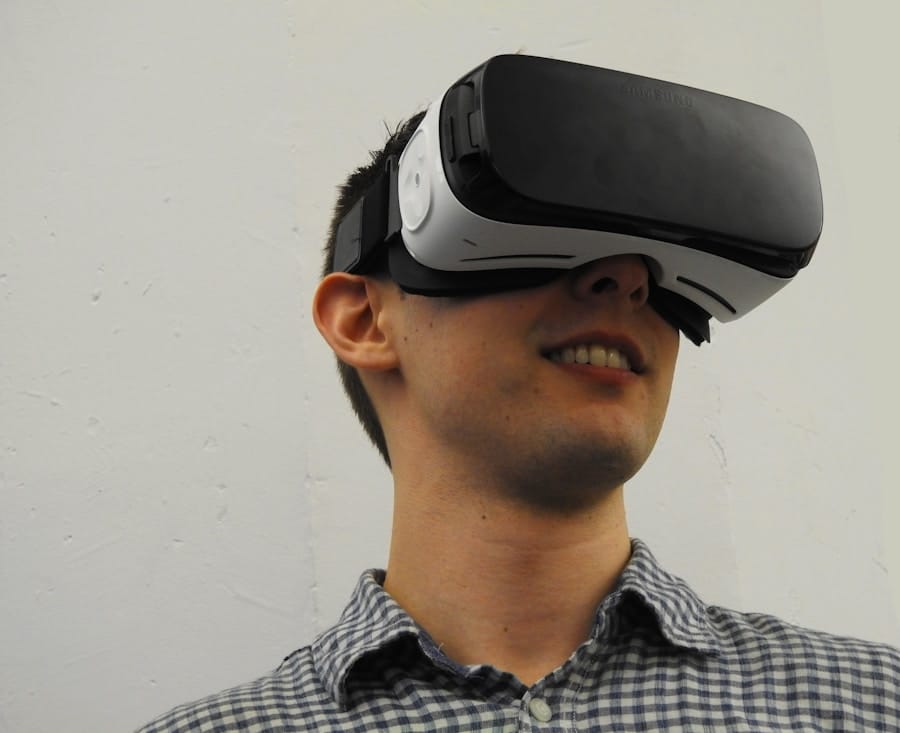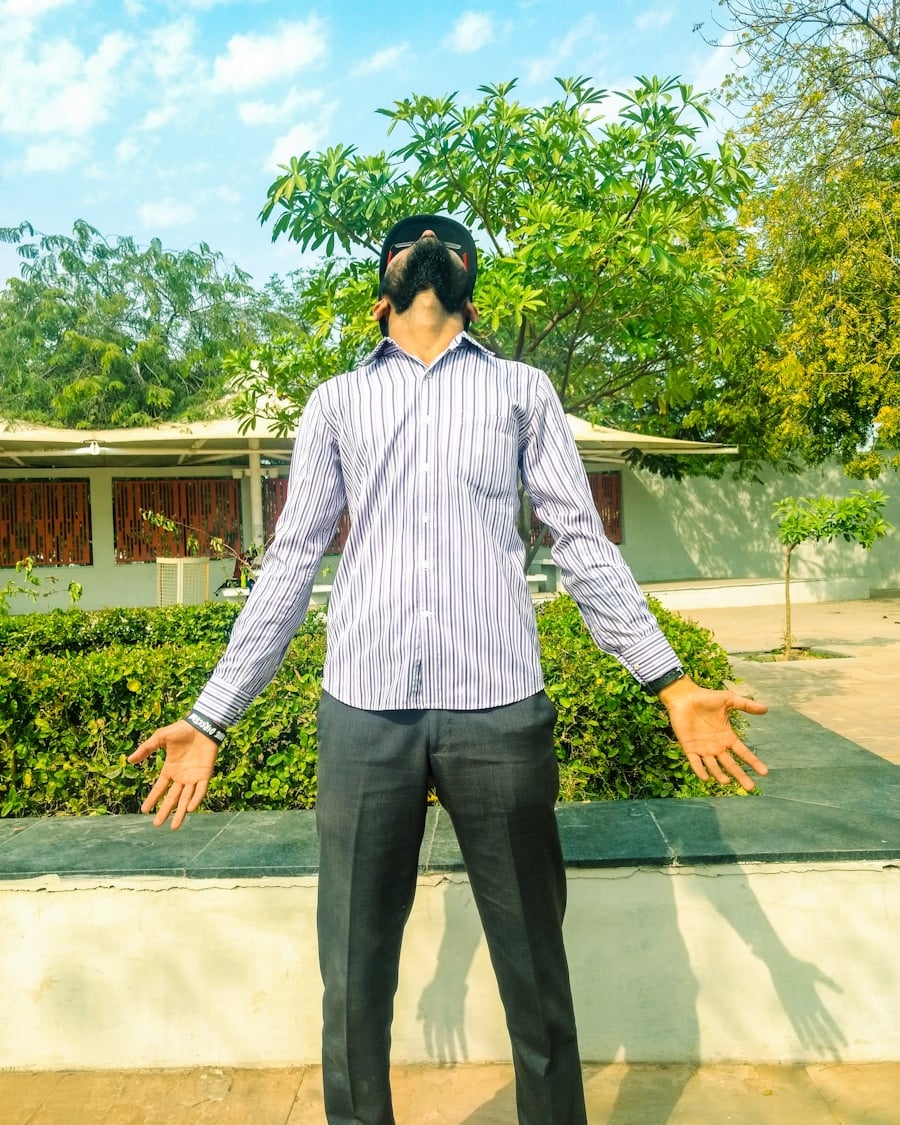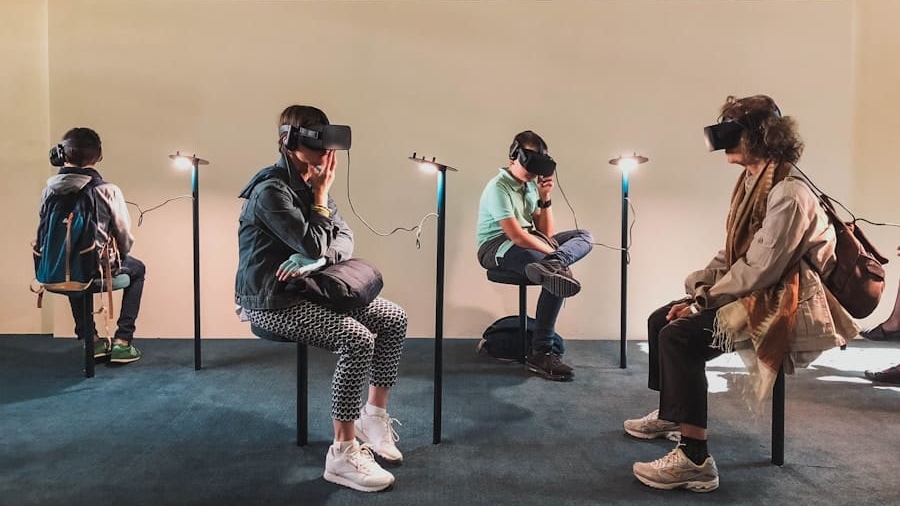The fear of public speaking, often referred to as glossophobia, is a common phenomenon that affects a significant portion of the population. Studies suggest that approximately 75% of individuals experience some level of anxiety when faced with the prospect of speaking in front of an audience. This fear can stem from various sources, including the fear of judgment, the pressure to perform well, and the potential for making mistakes.
The physiological responses associated with this anxiety can manifest as increased heart rate, sweating, and even nausea, which can further exacerbate the fear and create a vicious cycle of avoidance. Understanding the psychological underpinnings of this fear is crucial for addressing it effectively. Many individuals harbor negative beliefs about their speaking abilities, often rooted in past experiences or societal expectations.
For instance, a person who has faced criticism during a previous presentation may develop a heightened sensitivity to perceived judgment in future speaking situations. Cognitive-behavioral theories suggest that reframing these negative thoughts and gradually exposing oneself to public speaking scenarios can help mitigate anxiety. However, traditional methods of exposure can be daunting and may not always be accessible, leading to the exploration of innovative solutions like virtual reality (VR) training.
Key Takeaways
- Fear of public speaking is common and can be attributed to a fear of judgment, rejection, or failure.
- Virtual reality (VR) in public speaking training offers benefits such as increased accessibility, cost-effectiveness, and the ability to simulate realistic speaking scenarios.
- VR simulated audiences can help individuals overcome anxiety and nervousness by providing a safe and controlled environment for practice and exposure therapy.
- Feedback and analysis in VR public speaking training can offer valuable insights and personalized guidance for improvement.
- Building confidence and presence in virtual environments through VR training can translate to increased confidence in real-life speaking situations.
The Benefits of Virtual Reality in Public Speaking Training
Realistic Scenarios and Anxiety Reduction
This immersive experience can help individuals acclimate to the sensations associated with speaking in front of an audience, thereby reducing anxiety over time.
Customization and Training Experience
Moreover, VR training can be tailored to meet the specific needs of each individual. Users can select different environments—ranging from small conference rooms to large auditoriums—allowing them to practice in settings that reflect their personal challenges. This customization enhances the training experience, as individuals can gradually increase the difficulty level as they become more comfortable.
Comprehensive Training for Real-World Scenarios
Additionally, VR can incorporate various audience reactions, from supportive applause to critical feedback, providing a comprehensive training experience that prepares speakers for a wide array of potential scenarios.
Overcoming Anxiety and Nervousness through VR Simulated Audiences

One of the most significant advantages of VR in public speaking training is its ability to simulate audiences that respond in real-time. This feature allows individuals to confront their fears in a safe environment where they can practice their delivery without the immediate consequences of a live audience. The presence of a virtual audience can evoke similar physiological responses as a real one, such as increased heart rate and adrenaline rushes, which helps individuals learn to manage their anxiety effectively.
Through repeated exposure to these simulated audiences, users can develop coping strategies to handle their nervousness. For instance, they might learn techniques such as deep breathing or visualization to calm their nerves before and during their presentations. Furthermore, VR allows for repeated practice without the fear of judgment from real people, enabling users to experiment with different styles and approaches until they find what works best for them.
This iterative process fosters resilience and adaptability, essential traits for any effective public speaker.
The Role of Feedback and Analysis in VR Public Speaking Training
Feedback is a critical component of any learning process, and VR public speaking training excels in providing immediate and constructive feedback. Many VR platforms are equipped with advanced analytics tools that track various metrics during a presentation, such as speech pace, volume, body language, and eye contact. This data can be invaluable for speakers looking to refine their skills, as it offers objective insights into areas that may require improvement.
In addition to quantitative feedback, some VR systems incorporate artificial intelligence (AI) that can analyze a speaker’s performance and provide personalized suggestions for enhancement. For example, if a speaker tends to speak too quickly when nervous, the system might recommend pacing techniques or suggest pauses for emphasis. This level of detailed analysis allows individuals to focus on specific aspects of their delivery that may not be apparent through self-assessment alone.
By combining real-time feedback with analytical insights, VR training creates a comprehensive learning environment that accelerates skill development.
Building Confidence and Presence in Virtual Environments
Confidence is often cited as one of the most critical factors in effective public speaking. The immersive nature of VR training helps build this confidence by allowing individuals to practice repeatedly in a safe space where mistakes are part of the learning process. As users become more familiar with their material and gain experience presenting in various simulated environments, they begin to develop a sense of presence that translates into real-world situations.
Moreover, VR training encourages users to experiment with their delivery styles and body language without the fear of immediate repercussions. This freedom fosters creativity and self-expression, enabling speakers to discover their unique voice and presence.
As they practice these techniques in VR, they become more adept at commanding attention and conveying their message effectively.
The Impact of Immersive Technology on Public Speaking Skills

The impact of immersive technology on public speaking skills extends beyond mere practice; it fundamentally alters how individuals approach the art of communication. Traditional methods often rely on rote memorization or scripted presentations, which can stifle spontaneity and authenticity. In contrast, VR encourages a more dynamic interaction with content and audience members by simulating real-life scenarios where adaptability is key.
Furthermore, immersive technology allows for the exploration of diverse cultural contexts and audience demographics. For example, speakers can practice addressing audiences from different backgrounds or cultures within the VR environment, helping them develop cultural sensitivity and awareness. This exposure is particularly valuable in today’s globalized world, where effective communication often requires an understanding of diverse perspectives.
By honing these skills in a virtual setting, speakers are better prepared for real-world interactions that demand flexibility and cultural competence.
Addressing Specific Challenges and Obstacles in VR Public Speaking Training
While VR offers numerous advantages for public speaking training, it is essential to recognize and address specific challenges associated with this technology. One significant obstacle is the potential for technical issues or glitches during training sessions. These disruptions can detract from the immersive experience and may lead to frustration or disengagement from users.
To mitigate this risk, it is crucial for training programs to ensure robust technical support and regular updates to the software used in VR environments. Another challenge lies in the accessibility of VR technology itself. While costs have decreased over recent years, not all individuals or organizations may have access to high-quality VR equipment or software.
This limitation could create disparities in training opportunities among different groups. To address this issue, educational institutions and organizations should explore partnerships with technology providers or seek funding opportunities that enable broader access to VR training resources.
Integrating VR Training into Public Speaking Education and Workshops
The integration of VR training into public speaking education and workshops represents a significant advancement in how communication skills are taught and developed. Educational institutions can incorporate VR modules into existing curricula, allowing students to engage with public speaking concepts through immersive experiences rather than traditional lectures alone. This hands-on approach not only enhances learning outcomes but also increases student engagement by making the process more interactive.
Workshops designed for professionals seeking to improve their public speaking skills can also benefit from incorporating VR training elements. Facilitators can use VR simulations as part of their curriculum to provide participants with practical experience while receiving immediate feedback on their performance. By blending traditional teaching methods with innovative technology like VR, educators can create comprehensive programs that equip individuals with the skills necessary for effective communication in various contexts.
In conclusion, virtual reality has emerged as a powerful tool for overcoming the fear of public speaking and enhancing communication skills through immersive training experiences. By addressing anxiety through simulated audiences, providing detailed feedback, building confidence, and integrating technology into educational frameworks, VR is reshaping how individuals approach public speaking challenges. As this technology continues to evolve, its potential for transforming public speaking education will likely expand further, offering new opportunities for learners at all levels.
A related article that may interest readers exploring the benefits of virtual reality in improving public speaking confidence is “Best Tablets for Kids 2023” from enicomp.com. This article discusses the latest technology trends in educational tools for children, highlighting how interactive devices can enhance learning experiences. By incorporating VR simulations into public speaking training, individuals can develop essential communication skills in a fun and engaging way.
FAQs
What is VR?
VR stands for virtual reality, which is a computer-generated simulation of an environment that can be interacted with in a seemingly real or physical way by a person using special electronic equipment, such as a helmet with a screen inside or gloves fitted with sensors.
How can VR improve public speaking confidence?
VR can improve public speaking confidence by providing a simulated audience for individuals to practice their public speaking skills in a realistic and controlled environment. This allows individuals to gain experience and confidence in speaking in front of others without the pressure of a real audience.
What are the benefits of using VR for public speaking practice?
The benefits of using VR for public speaking practice include the ability to practice in a safe and controlled environment, receive immediate feedback, and gradually build confidence and skills through repeated practice sessions.
Is there evidence to support the effectiveness of VR in improving public speaking confidence?
Yes, there is evidence to support the effectiveness of VR in improving public speaking confidence. Studies have shown that individuals who practice public speaking in VR environments experience reduced anxiety and improved performance when speaking in front of real audiences.
What are some VR platforms or tools that can be used for public speaking practice?
There are several VR platforms and tools that can be used for public speaking practice, including Oculus Rift, HTC Vive, and Samsung Gear VR. Additionally, there are specific VR applications and programs designed for public speaking practice, such as VirtualSpeech and Speech Center VR.

